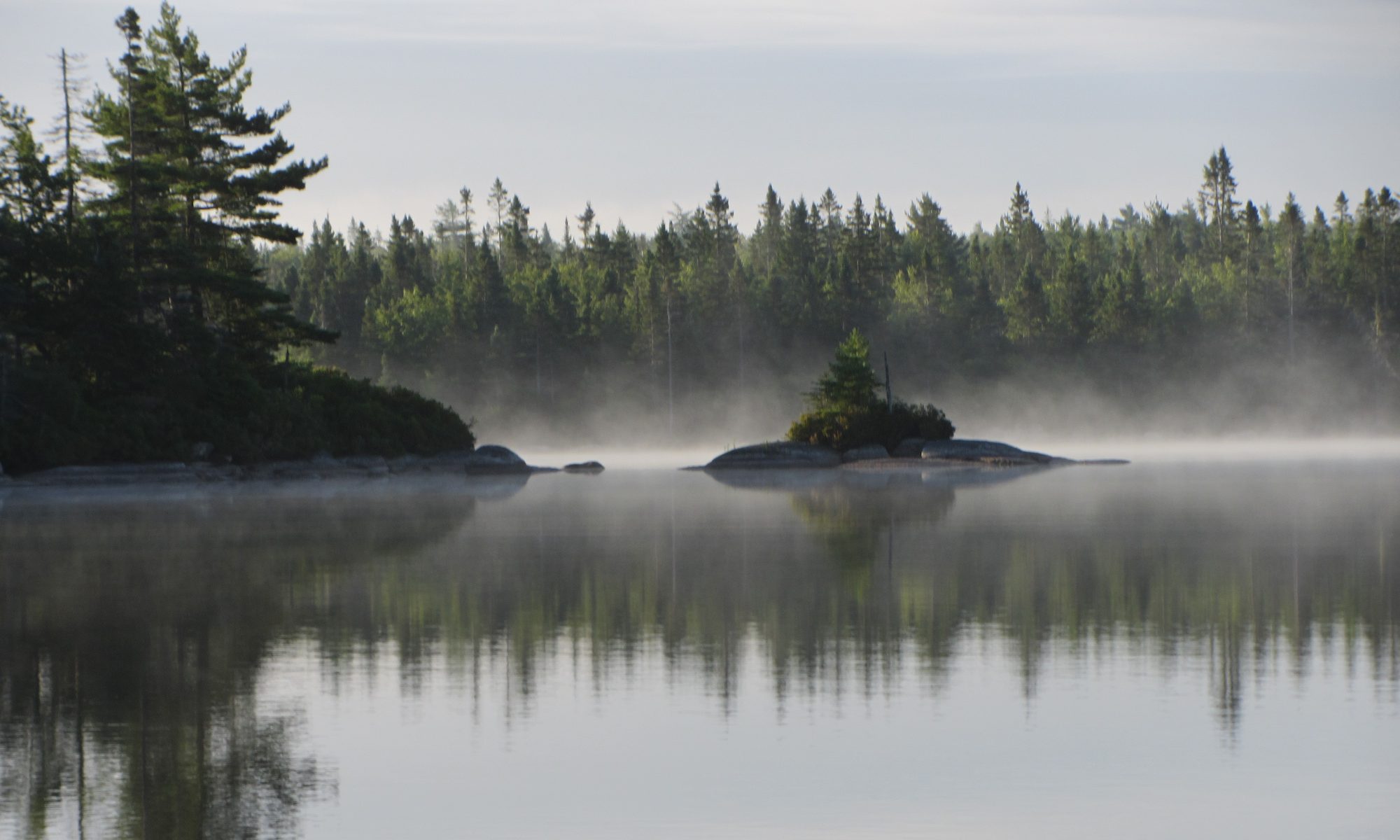WRWEO received a Special Invitation: Please make plans to attend : A Press Conference and Rally in support of the Final Report of the Doelle–Lahey Independent Panel on Aquaculture Regulations. It is a ground breaking Report which calls for major regulatory reform of the aquaculture industry in Nova Scotia from top to bottom . It is good and must be supported and implemented in its totality without delay .
Where : The Lord Nelson Hotel
When : 12 noon – Thursday, January 8th – one hour in duration Continue reading “Thurs Jan 8 at Noon: Panel on Aquaculture Regulations”
Five Bridges Trust Co-Chairs address Landfill Issue
In Dec. 8th letter, Co-chairs Harry Ward and Peter Lund request “Regional Council pay close attention to potential impacts that raising the height of the existing disposal cells could have on the protected wilderness area, particularly from:Blowing litter, odours, visibility and nuisance noise (particularly from trucks backing up).”
They also note: “Potential impacts to Nine Mile River is also an important concern, particularly considering increased development pressures within the headwater watershed lands of the Nine Mile River north of HWY 103, including residential subdivisions of Kingswood and Haliburton subdivisions who have aging septic systems, Lakeside Industrial Park, subdivisions in Timberlea, Halifax Water sewage treatment plant (situated adjacent Nine Mile River) and two pumping stations (one situated next to the Nine Mile River and the other situated next to Governor Lake which flows into the Nine Mile River) and the new Brunello Estates golf course and associated residential community and commercial development.”
Letter to HRM re: Increasing the height of the Landfill
UPDATE Dec 9, 2014: Otter Lake landfill modified changes approved by Halifax council, leaving the future of The Bluff Wilderness Hiking Trail in limbo. Not only will the landfill be more visible and beyond 2024, but it will be visible over a larger span of The Bluff Trail. It would no longer be valid to call The Bluff Trail, in its present form, a “wilderness trail” & “wilderness” is its raison d’être.
A decision to increase the height of the Otter lake Landfill could be made at the HRM Regional Council Committee of the Whole meeting on Tuesday Dec. 9. The relevant documents have been available for only a few days (see post below this one.) WRWEO Co-chairs, Past Chair, and the Chair of the Trails Committee have written a letter to Mayor Mike Savage and Councillors noting that in spite of our previous documentation of the visibility of the landfill from sections of The Bluff Trail, these viewplanes have apparently NOT been considered in the recommendations of staff to Regional Council… Please read Our Letter and earlier documents for more info. (Unfortunately, the relevant documents were made available too late for us (the Board) to appeal to WRWEO members and other Bluff Trail users for support of our position, but that opportunity may still avail after the Tuesday meeting.)

Otter Lake Landfill – Future to be determined Tuesday, Dec 9th, 2014
Tuesday, Dec 9th, 2014 at 10am: Committee of the Whole – City Hall
Please attend if you are able.
Integrated Solid Waste Resource Management Strategy Review – Consultations with Halifax Waste Resource Society Board of Directors with respect to Recommendations #7, 8 and 9 – Continuation from January 14, 2014 and June 24, 2014
HRM Staff Supplementary Report: http://www.halifax.ca/council/agendasc/documents/141209cow3.pdf
Which includes the Halifax Waste Resource Society, Position Paper as Attachment #1
Please read and send your comments to HRM Regional Council, ASAP, via: clerks@halifax.ca
– John Cascadden (FBWHT)
Birds At Risk
 “Birds At Risk is a half hour documentary that travels to birding hotspots around Nova Scotia to examine the health of our bird populations. The film introduces a passionate group of birdwatchers, biologists and volunteers that are playing an important role in the scientific research that is critical to keeping bird species alive.” See the Broadcast Premiere on CBC Television’s Land & Sea on Sunday, December 7, 2014 at 12 Noon. View Trailer
“Birds At Risk is a half hour documentary that travels to birding hotspots around Nova Scotia to examine the health of our bird populations. The film introduces a passionate group of birdwatchers, biologists and volunteers that are playing an important role in the scientific research that is critical to keeping bird species alive.” See the Broadcast Premiere on CBC Television’s Land & Sea on Sunday, December 7, 2014 at 12 Noon. View Trailer
Jellification of our lakes
 Studies by Jon Smol and colleagues at Queens University on lakes in Nova Scotia and Ontario reveal a very worrisome trend – a change in the phytoplankton species associated with declining calcium levels. “Without calcium entering the lakes in run-off, some crustaceans at the base of the aquatic food chain, which make their exoskeletons from the mineral, are at a disadvantage, and they’re being displaced by species that have an jelly-like coating. These jelly-organisms are inedible to many predators, and disruptive to the lakes’ ecological balance.” (CBC report). Acid rain combined with inherently poorly buffered soils, especially in SW Nova Scotia, is the major driver; clearcutting is also cited as a factor. View references on our Water Quality Page.
Studies by Jon Smol and colleagues at Queens University on lakes in Nova Scotia and Ontario reveal a very worrisome trend – a change in the phytoplankton species associated with declining calcium levels. “Without calcium entering the lakes in run-off, some crustaceans at the base of the aquatic food chain, which make their exoskeletons from the mineral, are at a disadvantage, and they’re being displaced by species that have an jelly-like coating. These jelly-organisms are inedible to many predators, and disruptive to the lakes’ ecological balance.” (CBC report). Acid rain combined with inherently poorly buffered soils, especially in SW Nova Scotia, is the major driver; clearcutting is also cited as a factor. View references on our Water Quality Page.
HRM puts out RFP for Greenbelting & Public Open Space Priorities Plan
 “The Halifax Regional Municipality (the Municipality) invites the submission of proposals from qualified professional firms (and teams) … for the development of a Greenbelting and Public Open Space Priorities Plan (Open Space Plan) for the protection of a regional network of lands for resource conservation, public service delivery and community shaping. This Plan is a key deliverable under the Halifax Regional Municipal Planning Strategy (Regional Plan).” Pages 21 on give readers a good sense of the envisaged why, what and how of greenbelting for HRM. View RFP. (The Closing Date is December-04-14.)
“The Halifax Regional Municipality (the Municipality) invites the submission of proposals from qualified professional firms (and teams) … for the development of a Greenbelting and Public Open Space Priorities Plan (Open Space Plan) for the protection of a regional network of lands for resource conservation, public service delivery and community shaping. This Plan is a key deliverable under the Halifax Regional Municipal Planning Strategy (Regional Plan).” Pages 21 on give readers a good sense of the envisaged why, what and how of greenbelting for HRM. View RFP. (The Closing Date is December-04-14.)
Hunting Season

New Website
This is the Home Page for WRWEO’s new website. We are still doing some editing but most of the content from the old site has been copied onto this site.
This website is constructed on WordPress, a popular blogging tool. This will enable more of our volunteers to contribute posts directly to the website, edit pages etc. (The old website required more technical expertise to manage.) The design is similar with regular posts on the home page (as in a blog) and other pages providing information about WRWEO and The Bluff Trail.
We are not including comment boxes on any of these pages as the experience of the editor with other WordPress sites is one of a plethora of scam posts.
We do encourage comments, however, and submission of links to photos, articles, and items for posts. Please send those directly to us via info@wrweo.ca
The older “posts” (on the old site under the heading What’s Up) have not been moved to this site. They can still be viewed at
http://versicolor.ca/wrweo2014. You will need to enter a username and password to access it. These are oldsite and oldsite2014 respectively.
Thanks for dropping by!
– David P
